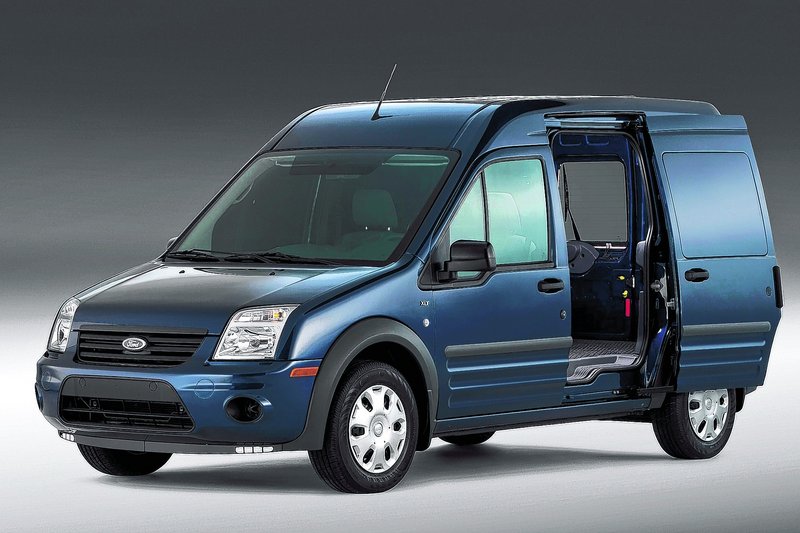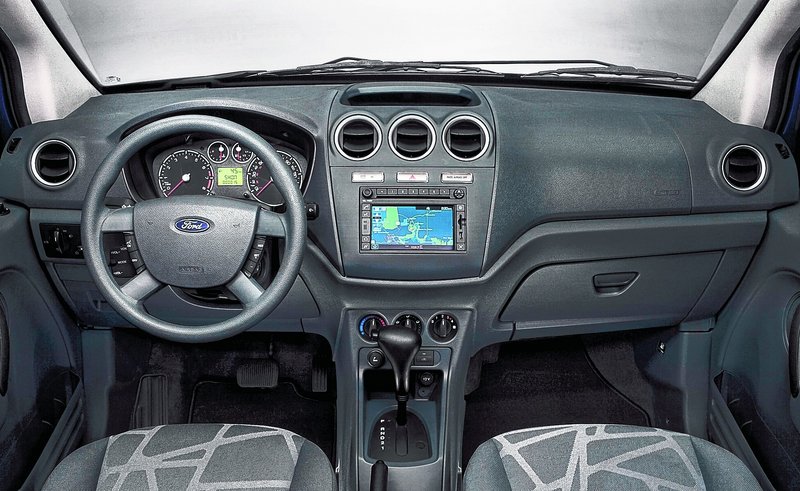In more than 20 years of writing this column, I’ve never felt compelled to leave a test vehicle in my driveway.
This week’s test vehicle, the Ford Transit Connect, proves there’s a first time for everything.
That’s not to say that the Transit Connect is the worst vehicle I’ve ever tested. In fact, its fuel economy, utility, maneuverability and price might make it appealing to you if you happen to wear a tool belt to work.
I don’t. I’m an editor and auto writer. As an auto writer, I’d be nuts to criticize Ford, which happens to be the hottest car company in the world right now. It recently announced a record third-quarter profit and gained enough market share to once again become America’s second-largest automaker.
But even Michael Jordan and Larry Bird threw up clunkers once in awhile. As a passenger vehicle, the Transit Connect is Ford’s “air ball.”
Ford’s recent success is due in large part to a string of terrific new and revamped models it has brought to market. The vehicles rolling off Ford assembly lines in Dearborn and Chicago the past couple of years have been critical and commercial successes.
This isn’t one of them. The Transit Connect is manufactured in Koceali, Turkey, using an engine that is built in Spain. After spending a week using it as a passenger vehicle, I regret that its cross-Atlantic journey didn’t end like the Titanic’s.
Despite my feelings, I’m not surprised Ford has sold more than 600,000 Transit Connects in 58 countries since it began puttering around Europe in 2003. The vehicle probably makes sense over there, where narrow streets, high fuel prices and the absence of pickup trucks stand to make the Transit Connect appealing to tradespeople.
But I don’t live in Istanbul or Brugge. Just because something makes sense in Europe doesn’t mean it’s suitable for the U.S. Take pickled eggs, pay toilets and kilts, for example.
In the U.S., many pickup truck owners drive them for work on weekdays and family functions on weekends, but the Transit Connect proves that not every vehicle is as capable of performing double-duty.
A plumber, carpenter or courier might find the Transit Connect’s maneuverability, interior access, cargo space and relatively good fuel economy (compared to conventional cargo vans) appealing in a work vehicle used for short hops to the job site or from delivery stop to delivery stop.
But I wouldn’t know a monkey wrench from monkey bread. The only tool I tote to work is a laptop computer, and the only stop I make during my daily drive is for coffee at a fast-food drive-thru window.
I avoided those drive-thru windows while testing the Transit Connect because I was too embarrassed to be seen in it even by strangers. Had the vehicle’s sides been covered by some company logo designating it as a work truck I probably wouldn’t have felt that way. But I didn’t want anyone to think I’d actually chosen such an odd-looking vehicle for my personal transportation.
The rest of my family didn’t want to ride in it either — not necessarily because they were embarrassed, but because it’s not a very accommodating passenger vehicle. It is noisy, tinny sounding and rough riding.
Vast expanses of uncovered sheet metal grace the interior. Where top-notch passenger vehicles have soft-touch surfaces, the Transit Connect has hard plastic. I hadn’t been in anything with so many hard surfaces since the last time I played racquetball.
The seats, which lack comfort and support, were clearly chosen to complement the rest of the interior.
The rear bench seat is only slightly more accommodating than sitting on a folded blanket on a park bench. And the front buckets are only marginally better. You sit on them rather than nestling into them — imagine sitting on a throw pillow on your sofa.
Maybe it’s a good thing the seats are uninviting because the Transit Connect doesn’t have a lot of passenger room. Despite having a whopping 78 cubic feet of cargo space behind its second-row seats in a compartment tall enough to handle any appliance shorter than a refrigerator, hip-, leg- and shoulder-room are not generous.
Two adults and a 10-year-old had to sit shoulder-to-shoulder and hip-to-hip to occupy the rear seat together. And with my 5-foot-7 wife at the wheel, the driver’s seat was back far enough to leave a similar-size passenger seated behind her with scrunched second-row legroom.
But the Transit Connect’s cabin seems downright refined compared to what’s under its hood. A state-of-the-art (for 1990) four-speed automatic transmission and front-wheel drive transaxle are mated to a two-liter, four-cylinder engine that delivers the thrust of an electric toothbrush.
My stopwatch pegged the Transit Connect’s zero-to-60 mph acceleration at 12.5 seconds. Without looking at the watch, I would have guessed it was slower. And “highway passing power” is a misnomer in this vehicle. With five passengers onboard, it’s more like “highway passing wishful thinking.”
In fairness, my complaints about the Transit Connect might be irrelevant if I were using it as a work vehicle.
Unfortunately for Ford’s public relations folks, I wasn’t. If Ford expects good reviews for this vehicle, it should send it for testing to satellite TV installers or bricklayers, not auto writers.
Scott Wasser is executive editor of MaineToday Media. He writes a weekly auto column for the Sunday Telegram and other newspapers. He can be reached at swasser@pressherald.com
Copy the Story Link
Send questions/comments to the editors.




Success. Please wait for the page to reload. If the page does not reload within 5 seconds, please refresh the page.
Enter your email and password to access comments.
Hi, to comment on stories you must . This profile is in addition to your subscription and website login.
Already have a commenting profile? .
Invalid username/password.
Please check your email to confirm and complete your registration.
Only subscribers are eligible to post comments. Please subscribe or login first for digital access. Here’s why.
Use the form below to reset your password. When you've submitted your account email, we will send an email with a reset code.